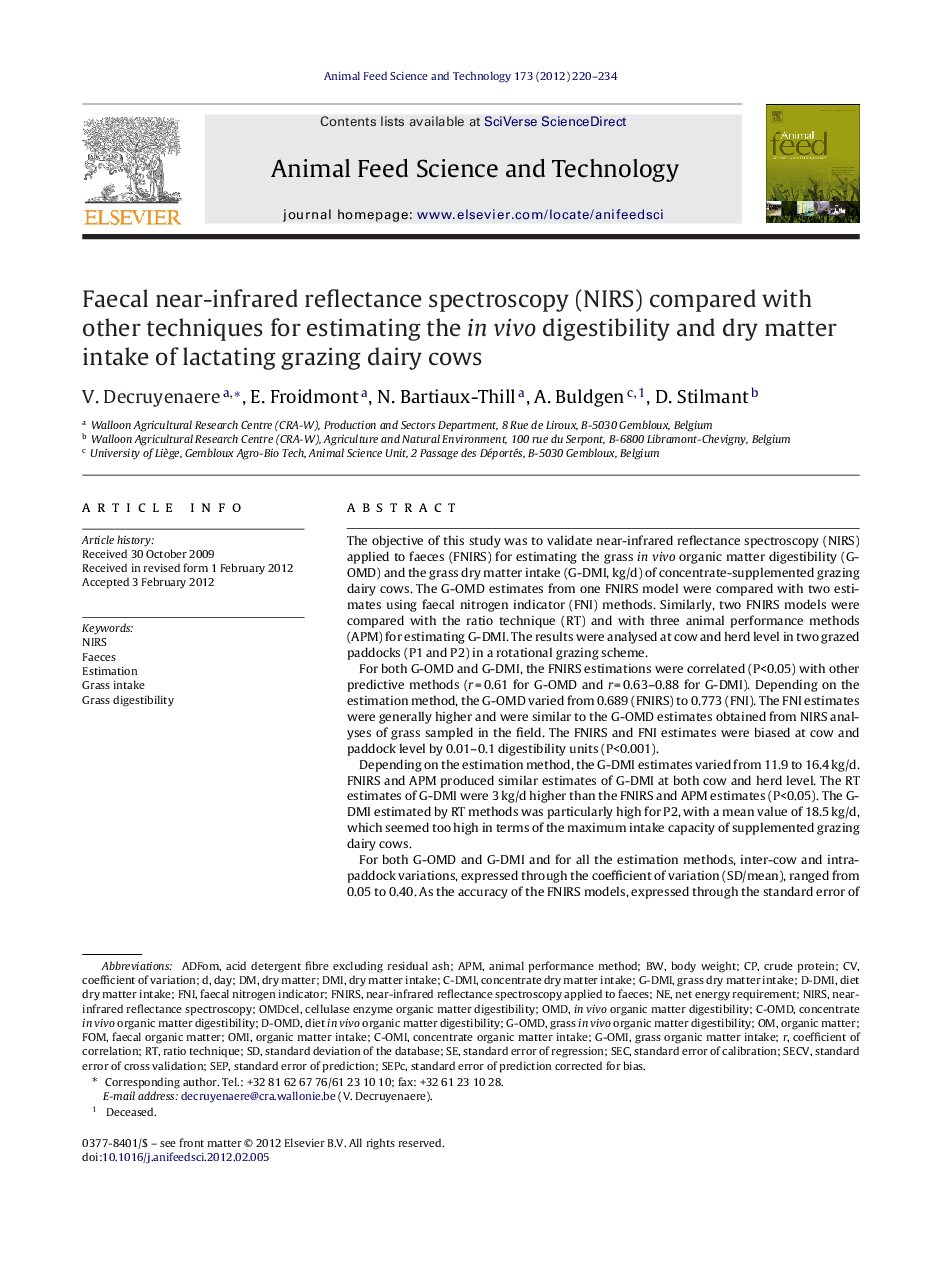| کد مقاله | کد نشریه | سال انتشار | مقاله انگلیسی | نسخه تمام متن |
|---|---|---|---|---|
| 2419940 | 1552419 | 2012 | 15 صفحه PDF | دانلود رایگان |

The objective of this study was to validate near-infrared reflectance spectroscopy (NIRS) applied to faeces (FNIRS) for estimating the grass in vivo organic matter digestibility (G-OMD) and the grass dry matter intake (G-DMI, kg/d) of concentrate-supplemented grazing dairy cows. The G-OMD estimates from one FNIRS model were compared with two estimates using faecal nitrogen indicator (FNI) methods. Similarly, two FNIRS models were compared with the ratio technique (RT) and with three animal performance methods (APM) for estimating G-DMI. The results were analysed at cow and herd level in two grazed paddocks (P1 and P2) in a rotational grazing scheme.For both G-OMD and G-DMI, the FNIRS estimations were correlated (P<0.05) with other predictive methods (r = 0.61 for G-OMD and r = 0.63–0.88 for G-DMI). Depending on the estimation method, the G-OMD varied from 0.689 (FNIRS) to 0.773 (FNI). The FNI estimates were generally higher and were similar to the G-OMD estimates obtained from NIRS analyses of grass sampled in the field. The FNIRS and FNI estimates were biased at cow and paddock level by 0.01–0.1 digestibility units (P<0.001).Depending on the estimation method, the G-DMI estimates varied from 11.9 to 16.4 kg/d. FNIRS and APM produced similar estimates of G-DMI at both cow and herd level. The RT estimates of G-DMI were 3 kg/d higher than the FNIRS and APM estimates (P<0.05). The G-DMI estimated by RT methods was particularly high for P2, with a mean value of 18.5 kg/d, which seemed too high in terms of the maximum intake capacity of supplemented grazing dairy cows.For both G-OMD and G-DMI and for all the estimation methods, inter-cow and intra-paddock variations, expressed through the coefficient of variation (SD/mean), ranged from 0.05 to 0.40. As the accuracy of the FNIRS models, expressed through the standard error of cross validation (SECV), was lower than these inter-animal and intra-paddock variations, we suggest that FNIRS could be used to record, quickly and easily, the evolution of grass digestibility and the intake of grazing dairy cows. These estimates could be implemented through decision-support systems aimed at improving the management of grazing dairy herds.
Journal: Animal Feed Science and Technology - Volume 173, Issues 3–4, 11 May 2012, Pages 220–234